I have been waiting for a while for people to come up with high current testing of the MT-G2 on copper, and now decided to do some testing on my own, I tested up to 7300 mA before the power supply gave up (not the led). When looking at the numbers below keep in mind that nothing is calibrated, and I do not have the skills and certainly not the accuracy of match or texaspyro, let go something fancy as a integrating sphere. But I will show you the set-up so you can judge the experiment for yourself, at least I am confident that the lumen measurements are within say 5%, for the current and voltage numbers I trusted the readings of my Kert stabilized power supply (which is of reasonable quality) but perhaps not rightly so (please feel free to disagree with the method), it does give an idea of the performance anyway.
So before giving the numbers, this is how it was done:
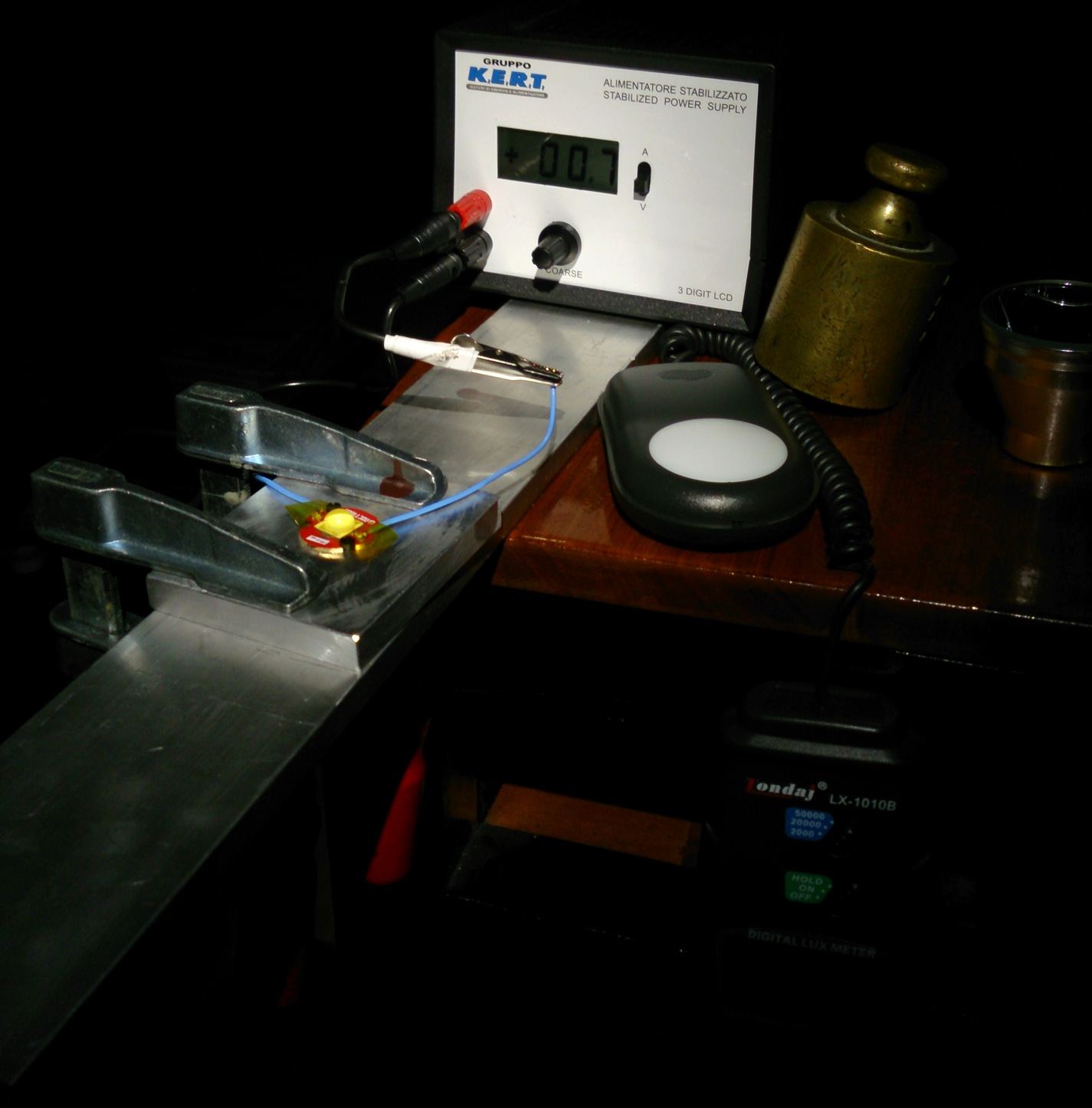
The led was reflowed on a Noctigon copper board and screwed tight onto a well flattened block of aluminium with a thin layer of arctic silver in between. The block was clamped onto a larger bar of aluminium. Nowhere during the experiment any significant heating up of the led board was felt, so the heat was transferred away very well, in fact at 4A (=26W) the lumen reading at started at 2156 lumen and stabilised after 2 seconds at 2140 lumen and that did not change anymore.
The led was directly connected to the power supply with short thick wires. In this experiment I regarded the power supply voltage reading therefore a measure of the Vf (and again, please correct me if this assumption is way wrong). The power supply also provided me with a current reading, no idea of the accuracy of that, but i used it anyway  . Unfortunately the power supply is rated for currents up to 5 amps, but I was glad it went up to 7300 mA all the same before some temperature/current/or whatever protection shut it off. So no higher current readings sadly
. Unfortunately the power supply is rated for currents up to 5 amps, but I was glad it went up to 7300 mA all the same before some temperature/current/or whatever protection shut it off. So no higher current readings sadly  .
.
I placed a 49mm reflector+(non-coated)lens coming from my Trusty Budget Test Throwertm  on top of the led board to simulate an actual budgetlight-real-world-situation
on top of the led board to simulate an actual budgetlight-real-world-situation  , it fitted very nicely. So the lumen readings that are given in this post are not led lumens but lumens that could actually be expected out the front of your budget modded light.
, it fitted very nicely. So the lumen readings that are given in this post are not led lumens but lumens that could actually be expected out the front of your budget modded light.
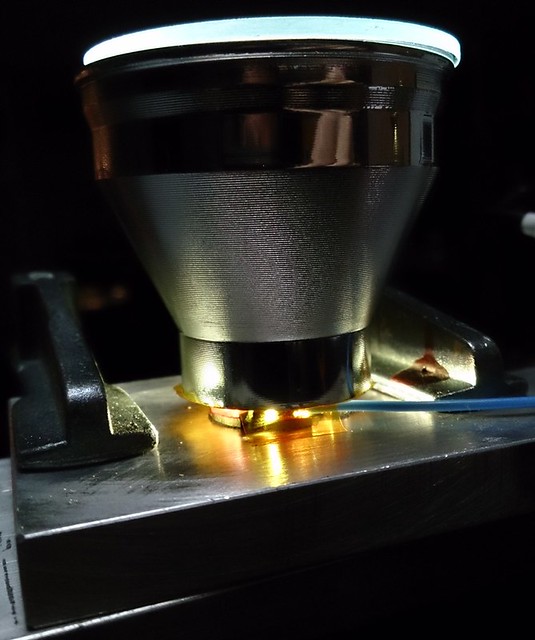

The light was directed towards the ceiling to be able to do ceiling bounce lux measurements. This was done the standard djozz way, 77cm from the ceiling, light measured with a Tondaj lx-1010b el cheapo luxmeter, calibrated with a few known flashlight outputs. In favor of the method, the djozz way has given me enough measurements that were close enough to ANSI-values or other people's measurements to trust it within a few percent.
Somewhere halfway during the test run:

The beam pattern on the ceiling, actually not bad at all with this reflector:

A peek at the led at less than 1 mA  :
:
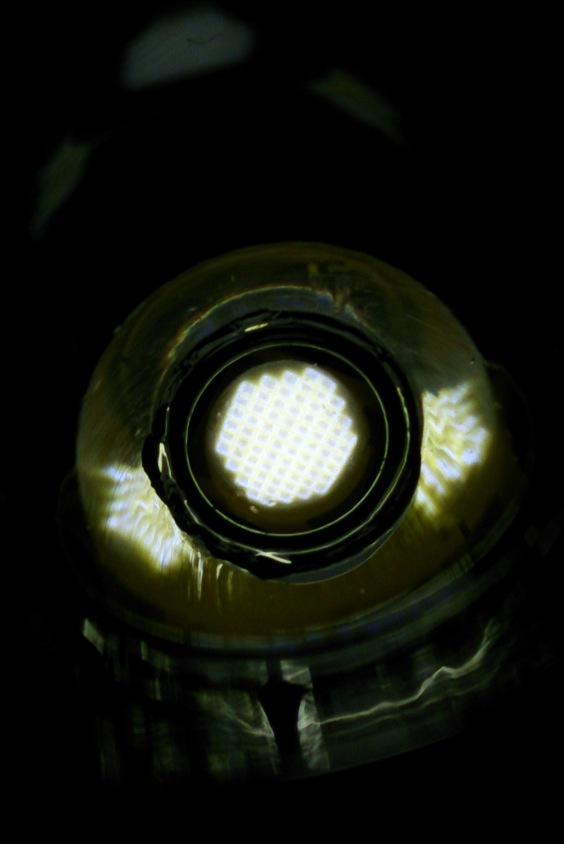
So here are the numbers, again mind that the lumens are simulated OTF-lumens, not bare led lumens:
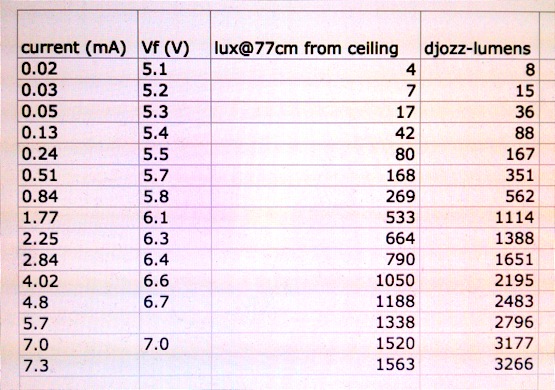
The fact that the Vf at 7 amps goes up to 7V might indicate that there may still be a voltage loss between power supply and led so the real Vf might be lower, someone better equipped (and less lazy) than me please correct these numbers. EDIT (may, 29th): some other measurements with this same set-up 'may suggest' that the Voltage measurements from this power supply are about 0.15V higher than the real Vf of the led. This would also be more consistent with MT-G2 data from Cree (although you don't really know, Cree's data were at 85 degC, no idea what the led-temperature is in my set-up)
I could not get the graph out of excel (I have to educate myself sometime) so here are the numbers in my original oldfashioned graph:
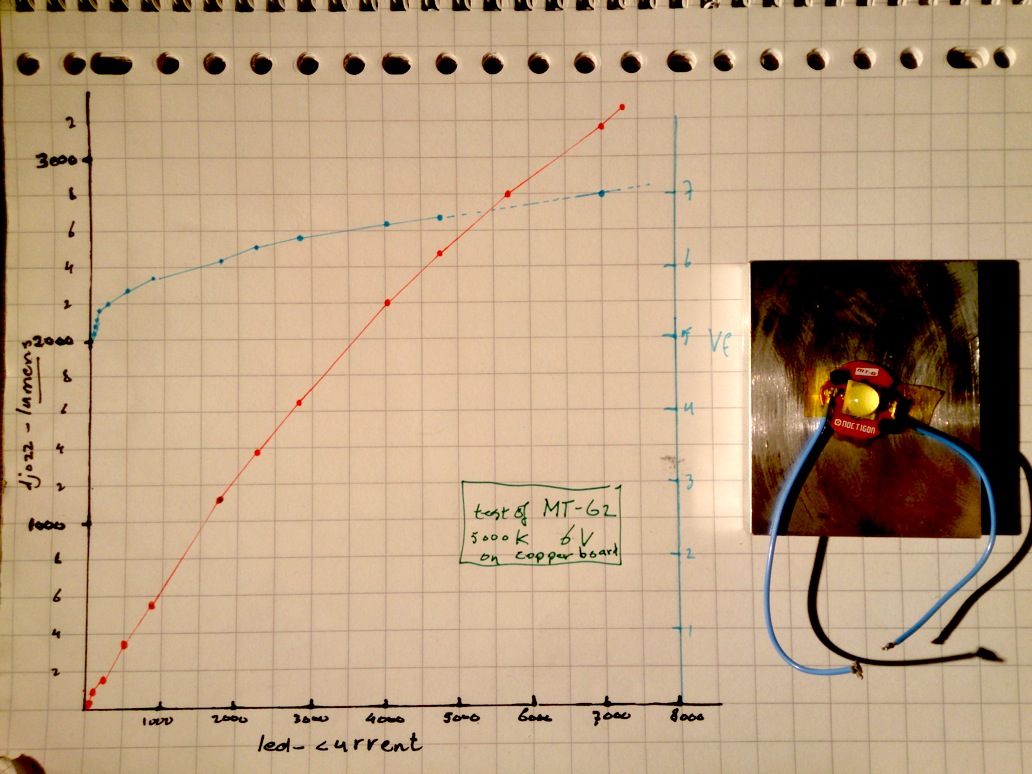
So what are my own conclusions from this rough and dirty test? Well, to get the most out of it, do not be satisfied with 5 amps for this led on copper, it did not care less for 7.3 A and that does not seem to be the end of it (so who is going to test at 10 amps? :evil: )
